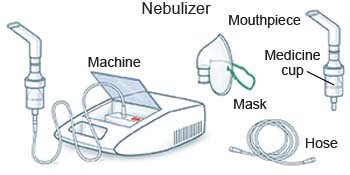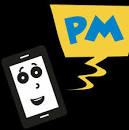Mastering Nebulizer Usage: A Complete Guide to Relieving Respiratory Symptoms
When respiratory symptoms strike, understanding how to use a nebulizer can be a game-changer in managing your health. Whether you’re dealing with asthma, COPD, or other respiratory issues, this comprehensive guide will empower you with the knowledge you need to make the most of your nebulizer treatment. We’ll cover everything from the basics of nebulizers to expert techniques and troubleshooting tips. So, let’s dive in and breathe easier.

Understanding Nebulizers: A Breath of Clarity
In this section, we’ll demystify the world of nebulizers. You’ll discover what these devices are and how they operate. Nebulizers work by transforming liquid medication into a fine mist that can be inhaled into the lungs. This mist ensures that the medication reaches the affected areas directly, providing rapid relief from respiratory distress.
Indications and Symptoms: When to Consider a Nebulizer
Are you wondering if a nebulizer is the right solution for your respiratory troubles? In this section, we’ll explore common symptoms that signal the need for nebulizer treatment. These symptoms include persistent coughing, wheezing, shortness of breath, and chest tightness. Remember, proper diagnosis by a healthcare professional is essential, so don’t hesitate to seek medical advice if you experience these symptoms.
Getting Started: Assembling Your Nebulizer
Now that you understand the basics and know when a nebulizer might be necessary, let’s move on to the practical side of things. We’ll guide you through the process of assembling your nebulizer kit. It’s simpler than you think! A typical nebulizer kit comprises several components, including an air compressor, medication cup, tubing, and a mask or mouthpiece. We’ll provide a step-by-step breakdown to ensure you’re ready to begin your treatment effectively.
Medications and Dosages: Tailoring Your Treatment
Now that your nebulizer is ready to go, it’s time to delve into the types of medications commonly used in nebulizers. We’ll discuss bronchodilators, which help open up airways, and corticosteroids, which reduce inflammation. Understanding the purpose of these medications and their proper dosages is crucial for effective nebulizer use. We’ll emphasize the importance of following your healthcare provider’s prescription in the letter.
Indications for Nebulizer Use
Before we dive into the practical aspects of using a nebulizer, it’s essential to understand when and why nebulizer therapy may be recommended. Respiratory conditions can manifest with a range of symptoms, and recognizing these indicators is key to timely intervention.
Common Indications for Nebulizer Use:
Asthma:
Individuals with asthma often require nebulizer treatments to manage sudden flare-ups, especially during asthma attacks marked by wheezing, shortness of breath, and coughing.
COPD (Chronic Obstructive Pulmonary Disease):
COPD patients may benefit from nebulizer therapy when they experience worsening symptoms like increased mucus production, chest tightness, and difficulty breathing.
Nebulizer Components
Now that you have a clear understanding of why nebulizers are prescribed let’s take a closer look at the essential components that make up a typical nebulizer system.
Key Nebulizer Components:
Compressor or Power Source:
The compressor is the heart of the nebulizer system, responsible for generating the airflow needed to aerosolize the medication. It can be powered by electricity or batteries, providing flexibility in usage.
Medication Cup/Chamber:
This is where the liquid medication is placed. It connects to the nebulizer’s tubing and compressor to create the mist.
Tubing:
Tubing is responsible for transporting the medication mist from the chamber to the mouthpiece or mask, allowing you to inhale the medication.
Preparation Before Nebulization
Now that you’re familiar with the indications for nebulizer use and the components of a typical nebulizer system, it’s time to prepare your nebulizer for effective treatment. Proper preparation ensures that you receive the full benefits of your prescribed medication.
Step-by-Step Guide for Nebulizer Preparation:
Wash Your Hands:
Start by thoroughly washing your hands with soap and water. This helps prevent the introduction of germs into the nebulizer system.
Assemble Your Nebulizer:
Gather all the necessary components, including the compressor, medication cup, tubing, and mouthpiece or mask. Assemble them according to the manufacturer’s instructions.
Inspect and Clean:
Check all components for any visible dirt or residue. Clean each part with warm, soapy water and rinse thoroughly. Some parts may be dishwasher-safe for added convenience. Ensure that all parts are completely dry before assembly.
Nebulization Technique
Effectively using a nebulizer requires more than just turning it on and inhaling. Proper technique is crucial to ensure that you receive the maximum benefit from your medication. Let’s explore the steps to optimize your nebulization experience:
Optimal Nebulization Technique:
Quiet, Relaxed Environment:
Find a quiet and comfortable place to sit during your nebulization session. Relaxation can aid in deeper breathing.
Deep Breathing:
Take slow, deep breaths through the mouthpiece or mask. Ensure that you inhale all the medication mist. Avoid shallow breathing.
Inhale-Hold-Exhale:
After inhaling the mist, hold your breath for a few seconds (if comfortable) before exhaling through your nose. This allows the medication to settle in your airways.
FAQ’s About how to use a nebulizer
Q: What is a nebulizer used for?
A: A nebulizer is a medical device used to deliver liquid medication in the form of a fine mist directly to the lungs. It is commonly used to treat respiratory conditions like asthma, COPD, and bronchitis.
Q: How does a nebulizer work?
A: Nebulizers work by turning liquid medication into a breathable mist. This mist can be inhaled into the lungs, providing quick and effective relief for respiratory symptoms.
Q: Can children use nebulizers?
A: Yes, nebulizers are suitable for people of all ages, including children. They are often preferred for young children who may have difficulty using inhalers.
Q: How often should I clean my nebulizer?
A: It’s recommended to clean your nebulizer after each use. Additionally, perform a more thorough cleaning at least once a week to ensure proper hygiene and functionality.
Q: What is the difference between a jet nebulizer and an ultrasonic nebulizer?
A: Jet nebulizers use compressed air to create a mist, while ultrasonic nebulizers use ultrasonic vibrations. Jet nebulizers are more common and suitable for most medications, while ultrasonic nebulizers are quieter but may have limitations with certain medications.
Q: Can I use tap water in my nebulizer?
A: It’s best to use distilled or sterile water in your nebulizer to prevent mineral buildup and ensure the purity of the mist. Tap water can introduce impurities and potentially damage the device over time.
Q: How long does a nebulizer treatment typically take?
A: Nebulizer treatments usually last between 10 to 15 minutes, depending on the prescribed medication and dosage. It’s essential to complete the full session for optimal results.
Q: Are there any side effects of nebulizer use?
A: Nebulizer medications are generally well-tolerated, with fewer systemic side effects compared to oral medications. However, some individuals may experience mild side effects like increased heart rate or jitteriness.
Q: Can I use a nebulizer without a prescription?
A: In most cases, nebulizer medications require a prescription from a healthcare provider. It’s crucial to consult with a doctor to determine the appropriate medication and dosage for your condition.
Q: How do I store my nebulizer when not in use?
A: Store your nebulizer in a clean, dry, and dust-free environment. If your nebulizer comes with a carrying case, use it for added protection and convenience.
Conclusion:
Congratulations! You’ve completed this comprehensive guide on how to use a nebulizer effectively. We’ve covered everything from understanding the different types of nebulizers to optimal nebulization techniques and maintenance tips. By following the steps outlined in this guide and working closely with your healthcare provider, you can take control of your respiratory health and breathe easier.




